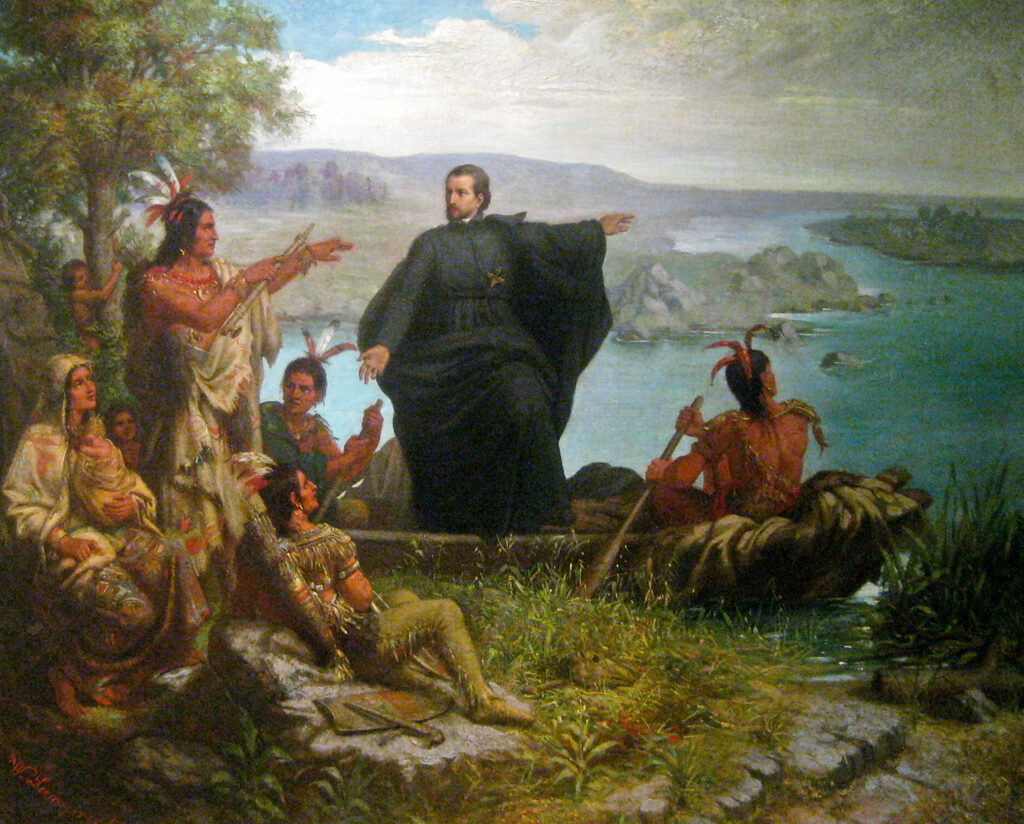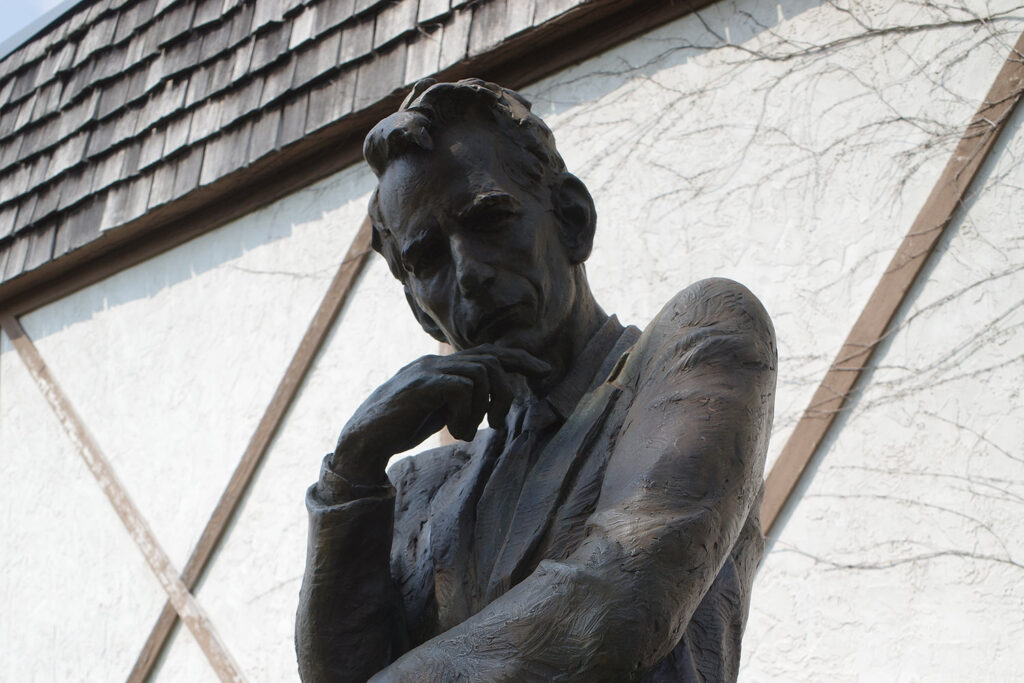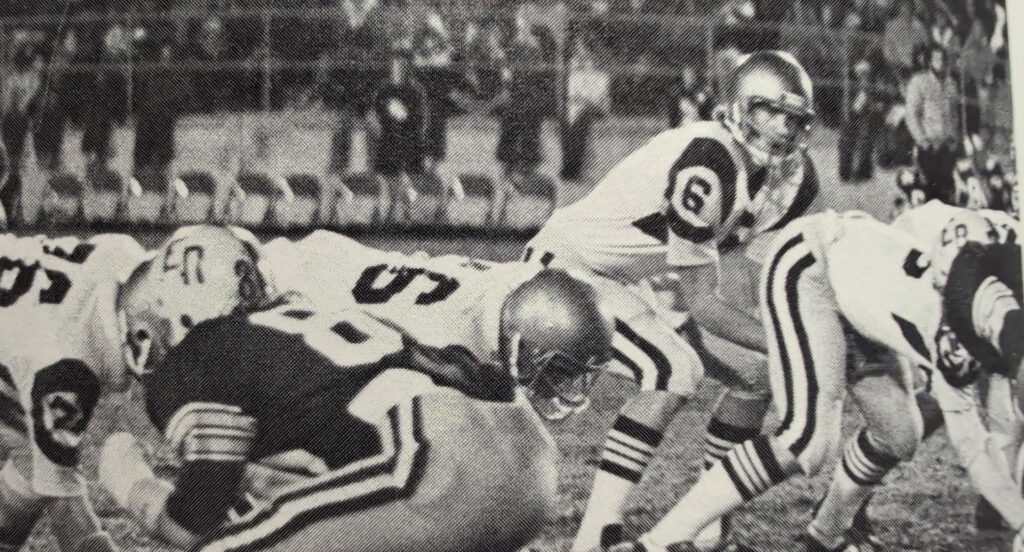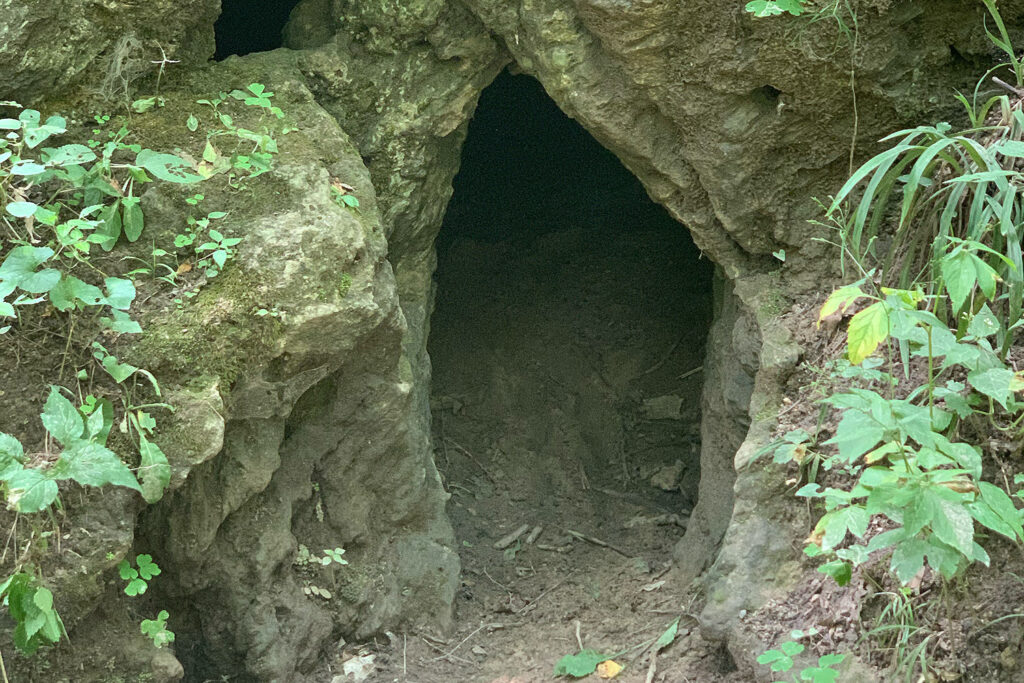Father Jacques Marquette hasn’t enjoyed a lot of peace and quiet over the past three-and-a-half centuries.
May 18 marks the 350th anniversary of his death. He passed away near Ludington on May 18, 1675, and since that time, his remains have been buried, dug up and buried again. They’ve been split up, moved around, and reunited. Various parties have worked to tear down the many memorials and tributes that were erected in Michigan and Wisconsin to honor his memory.
The sesquarcentennial anniversary of Marquette’s death is an appropriate time to take a look at his extraordinary journey.
Marquette ranks as one of the most influential and compelling people in world history. A French Jesuit missionary who was born in 1637, he established the first European settlement in Michigan in Sault Ste. Marie in 1668 and did the same in St. Ignace in 1671.
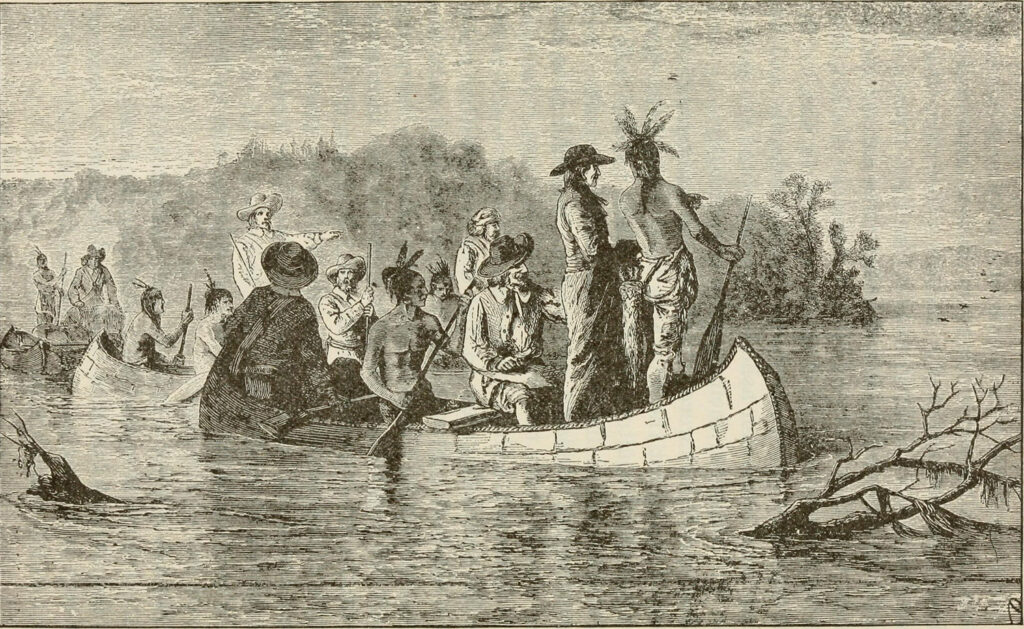
Father Marquette and a fellow explorer, the Quebec-born Louis Jolliet, were the first to explore and map the northern portion of the Mississippi River Valley.
Father Marquette established friendly relationships with the indigenous people who lived in the area, including the Ottawa, Chippewa, and Anishinaabe. He learned their languages and became fluent in six different dialects and respected their customs and traditions as he worked to convert them to Christianity.
As a missionary, he was remarkably successful. The Ottawa and Chippewa came to respect him so much that they let him baptize most of their infants and dying elders. He was especially successful when it came to winning over converts in the Kiskakon tribe, a band of Ottawa Indians.
All told, Father Marquette lived in Michigan for nine years—from 1666 until his death in 1675. In addition to establishing the first settlements in Sault Ste. Marie and St. Ignace, he also built a short-lived settlement on Mackinac Island.
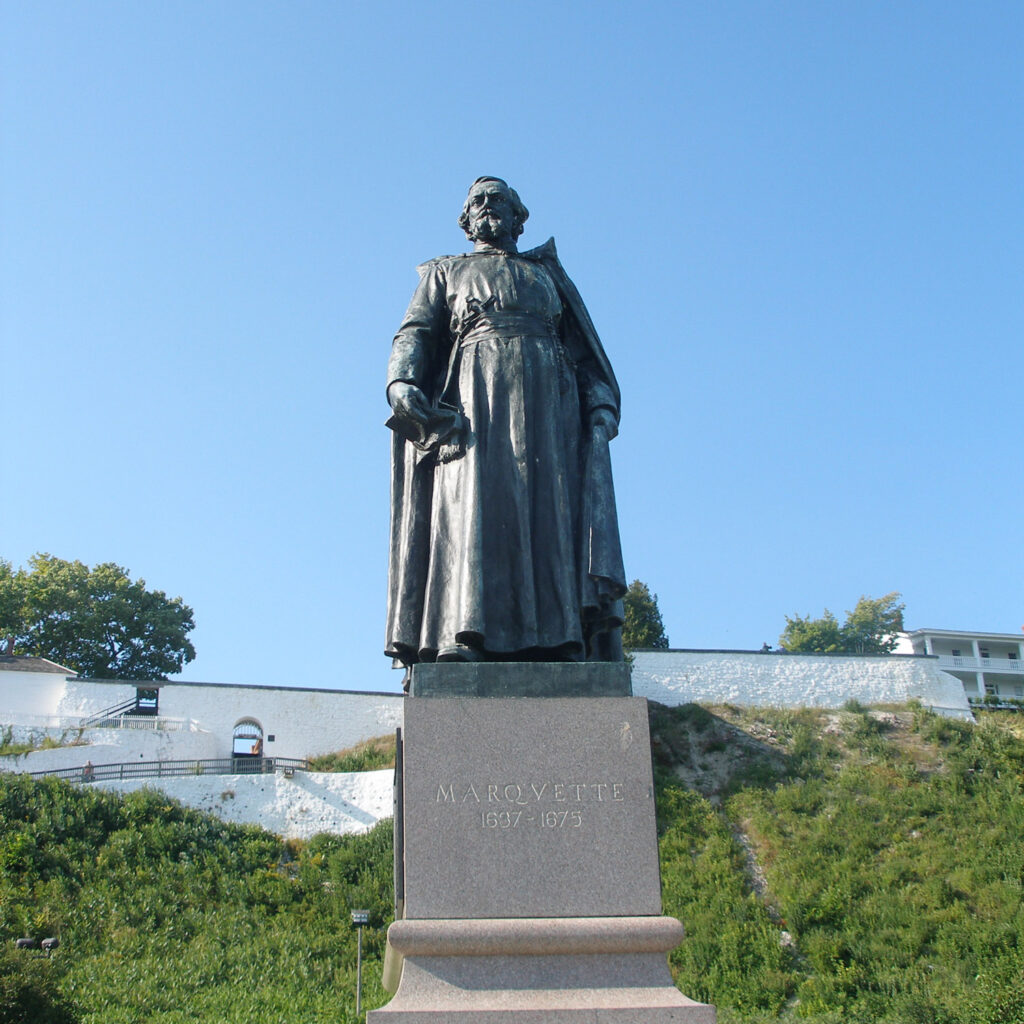
The settlers shut it down when they realized they’d have a hard time growing enough crops for everyone to live off. (The fudge shops hadn’t opened yet.)
He was so influential that a city in Michigan’s Upper Peninsula and a university in Milwaukee are named in his honor. There are also townships and streets that bear his name everywhere in Michigan and Wisconsin.
His story began in Laon, France, on June 1, 1637, when he was born to a wealthy merchant family. He was sent to study at a Jesuit college and officially joined the Jesuit Order when he was 17. He became a missionary and was sent across the Atlantic Ocean to New France, the French colonies in North America.
In the spring 1675, Father Marquette was heading back to St. Ignace from present-day Illinois when he came down with a terrible case of dysentery.
As they traveled up Lake Michigan, he died on May 18, 1675, near the present-day city of Ludington. His two companions, Pierre Porteret and Jacques Largillier, buried him in a spot that Father Marquette himself had chosen because he knew his time was short. He was only 37 years old.
Thus began a journey to find a final resting place that didn’t end for another 347 years.
In 1677, two years after his death, Father Marquette’s remains were removed from his burial spot in Ludington by some Kiskakon Ottawa tribal members who wanted to bring him home to St. Ignace.
In the annals of history, Father Marquette enjoys a unique legacy as one of the only European settlers revered and respected by the indigenous people whose land he was settling. That was true in 1675, and it’s true today. They adored Father Marquette and wanted him to be buried at his mission.
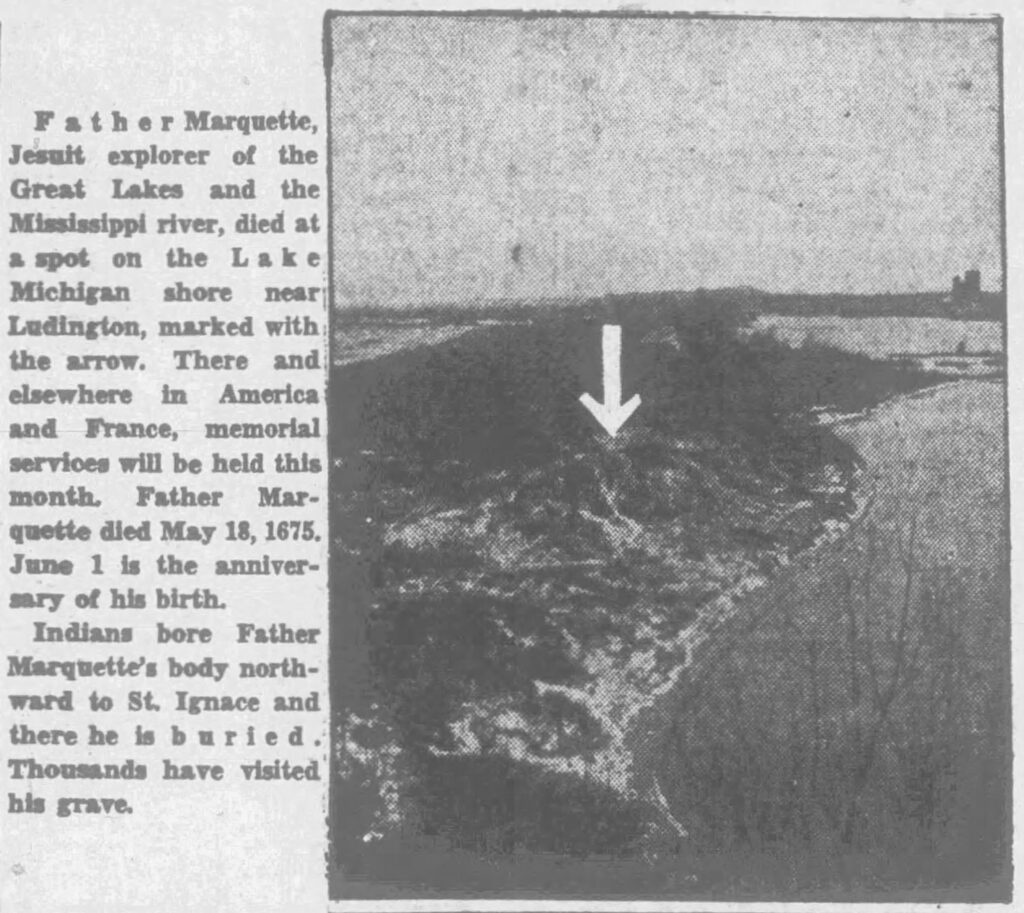
So, they cleaned his bones according to their tradition, and a convoy of 30 canoes carrying Ottawa and Huron Indians took his remains from Ludington back to St. Ignace. They were presented to the two Jesuit priests who ran the mission, and his official funeral took place on June 9, 1677.
Fast-forward 210 years. The French eventually abandoned their hold on St. Ignace, the mission closed and the site where Father Marquette was buried became overgrown farmland. Nobody kept track of where he his bones were.
All of that changed in 1877 when an Ojibwa researcher named Peter Grondin started doing some excavating work at the site where he thought the Jesuit mission might have been located. As he was digging at the site, he found a box that contained some bones.
It was indeed Father Marquette. The discovery made headlines from coast to coast. The New York Times reported: “Much interest has been aroused here by an antiquarian discovery just reported at Port St. Ignace, on the Straits of Mackinac.”
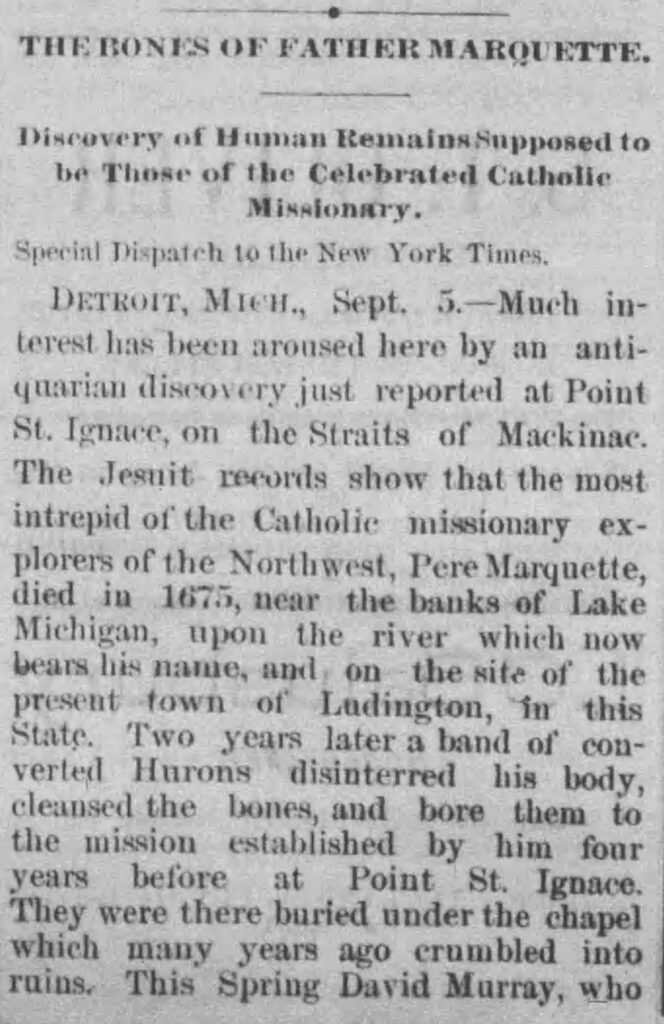
The Ojibwa took charge of giving Father Marquette a proper reburial on their land in St. Ignace, and this part of the story is key: At some point in 1877, before he was reburied, somebody took an ounce of Father Marquette’s bones—about 19 small fragments—and gave them to Marquette University in Milwaukee.
For the next 145 years, that’s how it stood. Part of Father Marquette was in St. Ignace and part of him was in Milwaukee. This went against the Catholic belief that a person’s remains need to be kept together. The Catholics don’t believe in sprinkling ashes or anything of the sort.
That situation would eventually be rectified, but in the meantime, memorials and tributes to Father Marquette were springing up everywhere in Michigan and Wisconsin, and this would eventually become a source of controversy, believe it or not.
In 1955, the City of Ludington erected a beautiful cross on a hilltop park in Pere Marquette Township, on the site where many historians believe Father Marquette died. It became a huge tourist attraction, and nobody thought too much about it until 2017, when a rabblerousing atheist and activist named Mitch Kahle came to town.
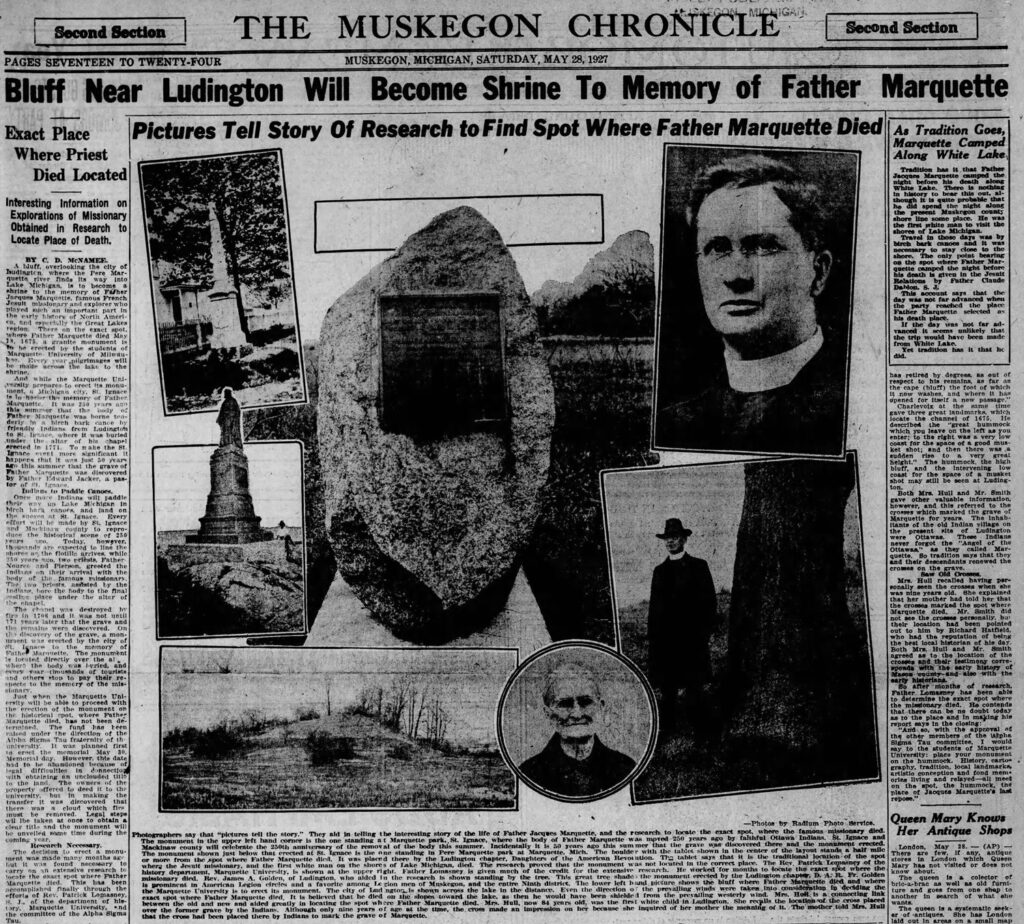
Kahle was part of a group called the Michigan Association of Civil Rights Activists, and he demanded that Pere Marquette Township tear down the cross, saying it was a violation of the Constitution for a public body to be owning and maintaining a religious symbol. Kahle also wanted the state to remove some historical markers honoring Father Marquette located in both Ludington and Marquette.
Kahle also claimed with no evidence whatsoever that Father Marquette didn’t actually die in Ludington. He said the missionary died in Illinois, so what is Michigan doing honoring him anyway?
In any case, some very heated community meetings followed. Pere Marquette Township eventually caved in and sold the property to a nonprofit group called the Pere Marquette Memorial Association, which to this day raises money to preserve and maintain the cross.
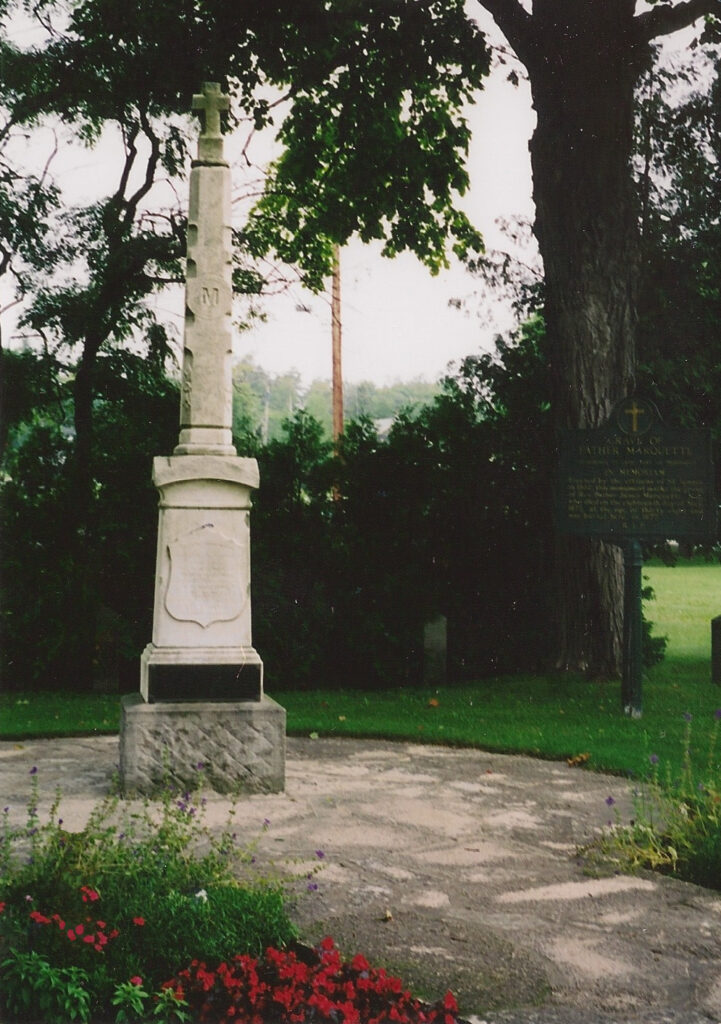
The state did not cave, however, and the memorial markers honoring Father Marquette are still standing.
While those matters were settled, though, Father Marquette still wasn’t resting in peace because his remains were spread across two states.
That situation was finally resolved in summer 2022, when Marquette University agreed to give up the ounce of the bones so that Father Marquette—all of him—could be laid to rest in St. Ignace.
It was a solemn affair. A delegation of Anishinaabe elders went to Milwaukee to claim and clean the tiny bone fragments and transport them back to Michigan.
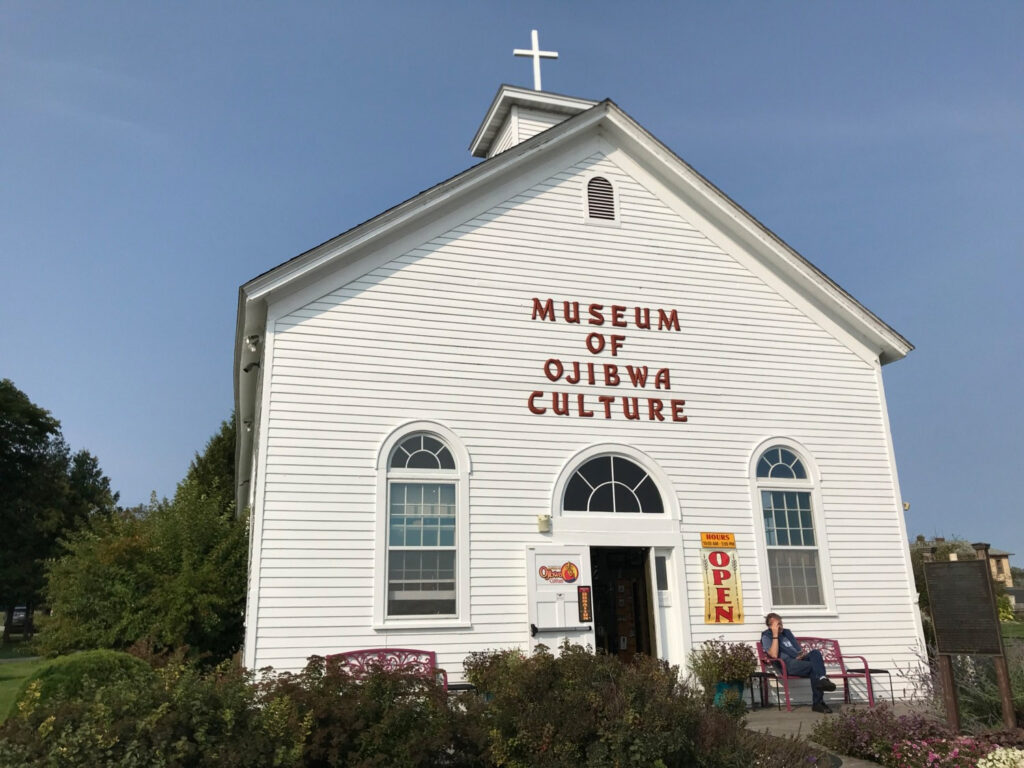
On June 18, 2022—a full 347 years after he died —Father Marquette’s final funeral took place at the Museum of Ojibwa Culture in St. Ignace. More than 200 people attended the ceremony, which included spiritual leaders of the Three Fires tribes (Ojibwa, Ottawa and Potawatomi), along with representatives of the Christian, Jewish, and Buddhist faiths.
At long last—and let’s hope this is the end of it—Father Marquette can rest in peace.
Buddy Moorehouse teaches documentary filmmaking at Hillsdale College.
